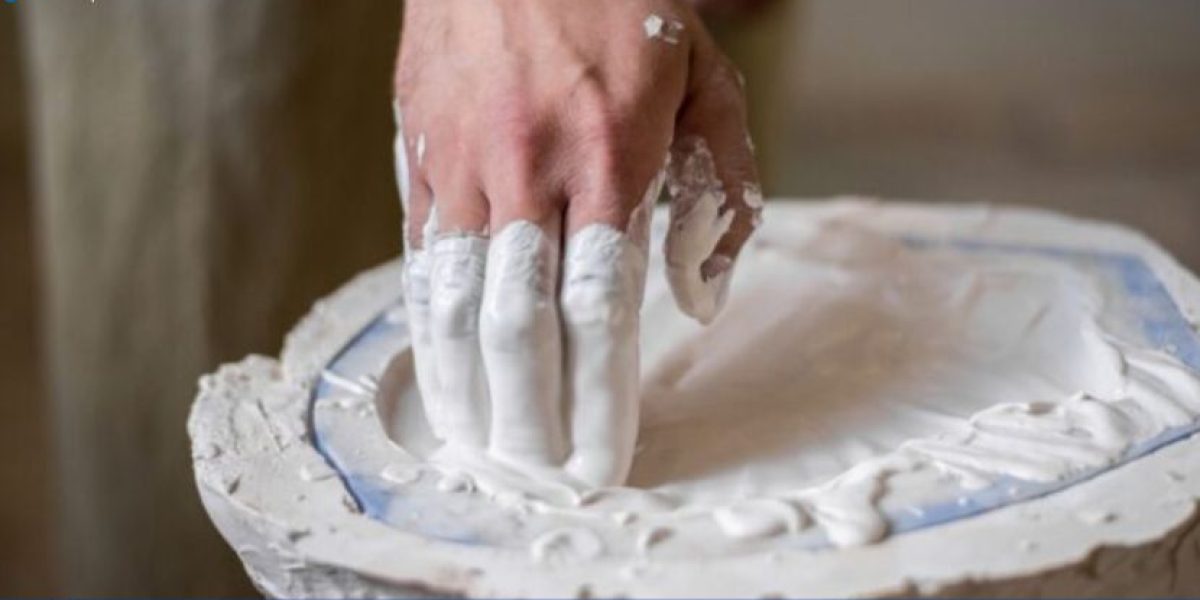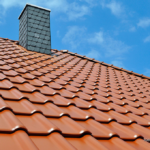Introduction
A Plaster of Paris Manufacturing Plant Project Report is a comprehensive guide that details the process and infrastructure required to establish a plant focused on producing Plaster of Paris (POP). Plaster of Paris is a versatile and essential material used in a wide range of industries, including construction, medical, and artistic applications. It is commonly used for making molds, casting, sculptures, and in the construction of walls and ceilings.
Plaster of Paris is produced by heating gypsum (calcium sulfate dihydrate) to around 150°C, removing the water content, and creating a fine powder that can be mixed with water to form a paste. This paste sets quickly and hardens into a solid mass, making it ideal for casting, molding, and repair works.
Given its widespread use, establishing a Plaster of Paris manufacturing plant can be a lucrative business venture. This report provides an in-depth look into the raw materials, manufacturing process, plant design, and market demand, along with other essential aspects of setting up and running a successful POP plant.
What is Plaster of Paris?
Plaster of Paris is a white, powdery substance derived from heating gypsum, a naturally occurring mineral. Chemically, it is known as calcium sulfate hemihydrate (CaSO₄·½H₂O), and when mixed with water, it forms a paste that sets quickly to form a solid, hardened structure. This paste can be molded into various shapes, making POP ideal for use in:
- Construction: For making plasterboards, false ceilings, wall coatings, and for fireproofing materials.
- Medical Uses: For making casts for broken bones and as a mold for dental work.
- Art and Sculpture: As a casting medium for statues, decorative items, and in art therapy.
- Industrial Uses: For creating molds and prototypes for industries such as automotive, jewelry, and consumer goods manufacturing.
The versatility of POP, combined with its ease of use and low cost, makes it an essential material in many industries.
Get a Free Sample Report with Table of Contents@
Raw Materials for Plaster of Paris Production
The primary raw material used in the production of Plaster of Paris is gypsum, a soft sulfate mineral composed of calcium sulfate dihydrate (CaSO₄·2H₂O). To produce POP, gypsum is heated to a specific temperature to remove part of its water content. Other raw materials and chemicals used in the manufacturing process include:
- Gypsum
High-quality gypsum is the main raw material for the production of POP. It is typically extracted from quarries or mines and is processed into the desired form before being used in the production process. - Hydraulic Lime (Optional)
Sometimes, a small quantity of hydraulic lime is added to improve the strength and durability of the final product. This is especially true for POP used in construction. - Additives and Plaster Binders
In some specialized POP applications, various additives and binders may be added to control the setting time, enhance strength, or improve the material’s workability. - Water
Water is essential in the final phase of the process, as it is used to mix the powdered Plaster of Paris to form the paste or slurry that is then molded and allowed to set.
Plaster of Paris Manufacturing Process
The manufacturing process for Plaster of Paris involves several key steps, which include gypsum mining, heating, and packaging. Here’s an overview of the stages involved:
1. Mining and Crushing of Gypsum
The first step in the process is the extraction of gypsum from quarries or mines. Once the gypsum is obtained, it is crushed into smaller pieces using crushers or mills. The crushed gypsum is then sorted and stored in a designated area for further processing.
2. Calcination (Heating Process)
The primary step in turning gypsum into Plaster of Paris is calcination, where the crushed gypsum is heated in rotary kilns or batch kilns at a temperature of approximately 150°C. During this process, part of the water content in gypsum is evaporated, transforming it into calcium sulfate hemihydrate. The result is a fine, white powder known as Plaster of Paris. The temperature and duration of heating must be carefully controlled to produce high-quality POP.
Where:
- CaSO₄·2H₂O is gypsum
- CaSO₄·½H₂O is Plaster of Paris
- The remaining 1½H₂O is released as water vapor during heating.
3. Grinding and Pulverizing
After calcination, the Plaster of Paris is ground into a fine powder using grinders or pulverizers. This fine powder is then sieved to remove any large particles, ensuring a uniform consistency for the final product.
4. Mixing with Water (Formulation Process)
To create the desired consistency for different applications, the powdered Plaster of Paris is mixed with water. The water-to-powder ratio varies depending on the intended use, with a typical ratio of about 2 parts of Plaster of Paris to 1 part of water. Once the paste is prepared, it is ready for molding or casting.
5. Molding and Setting
Once mixed with water, the POP paste is poured into molds to create the desired shapes. These molds can range from small sculptures and decorative items to large panels for construction purposes. The mixture is allowed to set and harden at room temperature.
The setting time of POP can be influenced by factors such as the water temperature, the amount of water used, and the type of mold used for casting.
6. Drying and Packaging
Once the Plaster of Paris has set and hardened, it is removed from the molds and dried in controlled drying ovens. After drying, the POP is packaged in bags or containers for sale to customers or for use in various industries.
Plant Design and Infrastructure
The design and infrastructure of a Plaster of Paris manufacturing plant must be carefully planned to ensure efficient production. Key aspects include:
- Raw Material Storage Area
A well-organized storage area for gypsum and other raw materials is essential for smooth operations. The materials should be kept in dry, dust-free conditions to prevent contamination. - Production Area
This area includes the crushers, calcination kilns, grinders, and mixing equipment required for the manufacturing process. Adequate ventilation and temperature control are crucial to ensure the quality of the POP. - Drying Ovens
After molding, POP products must be dried in controlled drying ovens to remove excess moisture. The drying process should be automated for consistency. - Quality Control Lab
A quality control lab is essential to test the strength, setting time, and purity of the Plaster of Paris. The lab will ensure that all products meet industry standards and specifications. - Packaging and Shipping Area
The final step in the manufacturing process is packaging. The packaging area should be clean and free from dust to avoid contamination. Automatic packing machines can be used to improve efficiency.
Market Demand and Applications
The demand for Plaster of Paris is driven by various industries, particularly in construction, healthcare, and art. Some of the key markets include:
- Construction
POP is widely used in the construction industry for making wallboards, false ceilings, fireproofing, and as a finishing material for walls and ceilings. It is also used for making decorative elements like cornices and moldings. - Medical Applications
POP is commonly used in the medical field for making orthopedic casts to immobilize broken bones. It is also used in dental molds and for making prosthetics. - Art and Sculpture
Plaster of Paris is a popular material in the art world for creating sculptures, molds, and casting artistic pieces. It is favored due to its ease of use, low cost, and ability to capture fine details in molds. - Industrial Applications
POP is used in industries like automotive and jewelry for casting molds and prototypes. It is also used for creating molds for manufacturing various components. - Emerging Markets
As construction activities increase in developing countries, particularly in Asia and Africa, the demand for POP in building materials is also on the rise.
FAQs
1. What is the primary raw material used in the production of Plaster of Paris?
The primary raw material is gypsum, a naturally occurring mineral.
2. How is Plaster of Paris made?
Plaster of Paris is made by heating gypsum to a temperature of around 150°C to remove part of its water content, resulting in a fine powder.
3. What are the common uses of Plaster of Paris?
It is used in construction (for wall finishes and ceiling boards), medical applications (casts), art (sculptures), and industrial casting.
4. How long does it take for Plaster of Paris to set?
Setting time typically ranges from 10 to 20 minutes, depending on the water-to-powder ratio and environmental conditions.
5. Can Plaster of Paris be used for exterior applications?
Plaster of Paris is mainly used for interior applications due to its low moisture resistance. For exterior use, it is typically mixed with additives to improve durability.
Related Reports
https://www.expertmarketresearch.com.au/reports/australia-chocolate-market
https://www.expertmarketresearch.com.au/reports/australia-compound-feed-market
https://www.expertmarketresearch.com.au/reports/australia-cooking-oil-market
Media Contact:
Company Name: Claight Corporation
Contact Person: Lewis Fernandas, Corporate Sales Specialist — U.S.A.
Email: [email protected]
Toll Free Number: +1–415–325–5166 | +44–702–402–5790
Address: 30 North Gould Street, Sheridan, WY 82801, USA
Website: www.expertmarketresearch.com
Aus Site: https://www.expertmarketresearch.com.au












